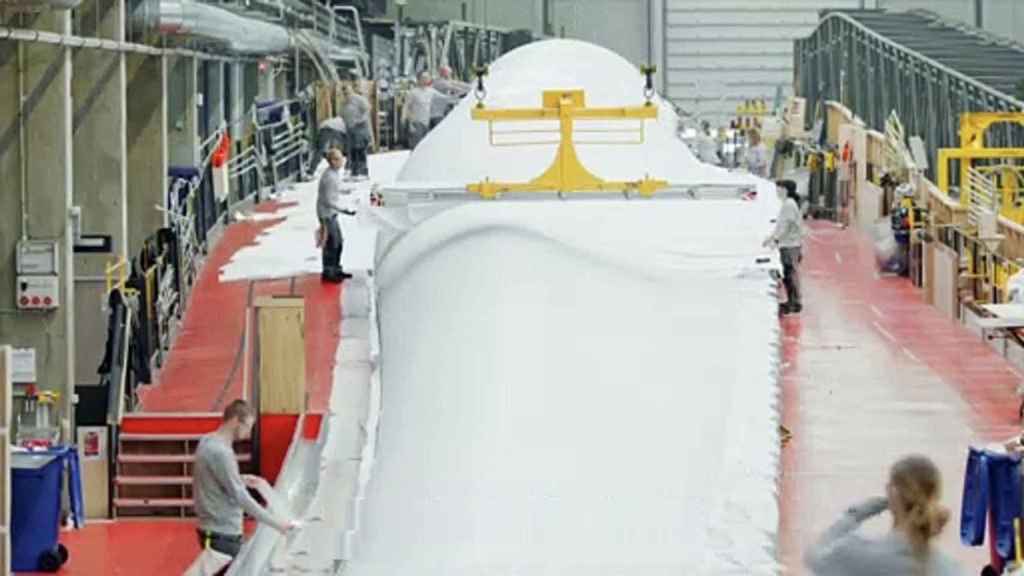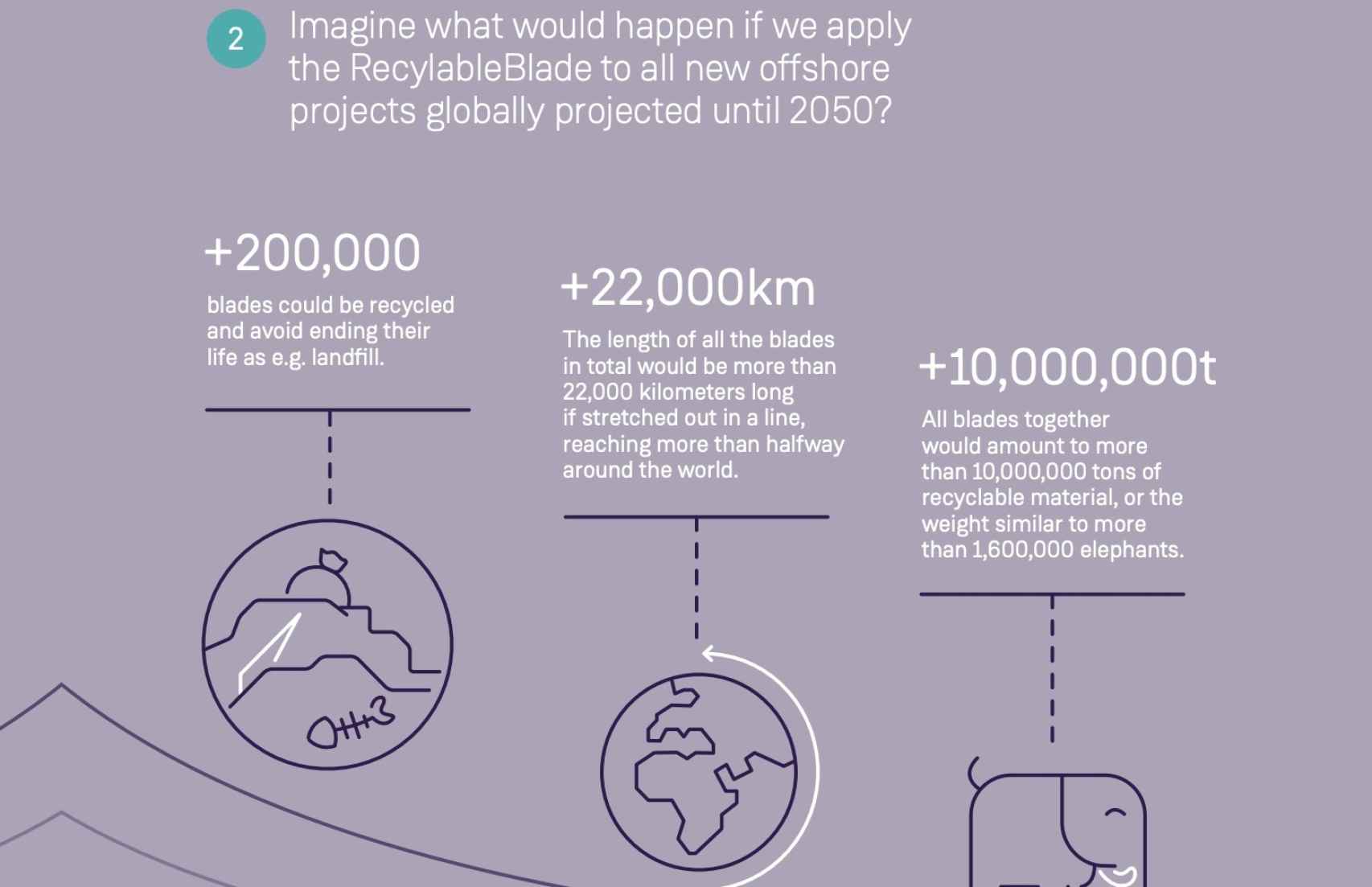Related news
The circular economy will be the basis for economic development in the coming years. AND Siemens Gamesa Renewables Energy (SGRE) wanted to get ahead of the competition. It has become the world’s pioneer wind power manufacturer in working in this regard. Just launched a wind turbine blade offshore that at the end of its useful life it will be 100% recyclable: the RecyclableBlade.
“It is not a pilot project, there are already six shovels built to RWE to be installed and tested in the wind farm offshore de Kaskasi in Germany “, he explains to Invertia Gregorio Acero, Director of Health, Safety and Environment of SGRE. The project is expected to be producing power from 2022.
“It is a technology change that we began to investigate more than two years ago in collaboration with the Technical University of Denmark, but it does not change neither the design nor its operation. “The blades can be completely recycled at the end of their useful life thanks to” a system that immerses them in a kind of bath with a weak acid (acetic acid) at 80ºC to decompose the materials”.
Factory in Alborg (Denmark) where the recyclable shovel is produced.
Meet the EU target
The key is in the resin. “It reacts to this process and each of the components of the blade is separated. The important thing is that we have managed to do it and that all the materials can be reused.”
Wind turbine blades are fused with glass and carbon fiber, a core material such as wood or polyethylene terephthalate (PET) foam, and a resin system.
“We recover all raw materials, and although it cannot be used for new shovels because they have been used for 20-30 years, they are perfect for use in the transport sector, construction or large infrastructures, for example “, adds Acero, who leads the department that prompted this investigation.
“And we do it not only to comply with the circular economy objectives of the European Union, but also because of the internal activism that exists in this company. All the Siemens Gamesa staff work with the conviction that we are in a sector that fights against climate change, which takes care of the planet and decarbonizes “.
Multiple buyers
Siemens Gamesa has already reached agreements with three of its main clients: Siemens Gamesa collaborates with RWE to install and test these innovative blades in the wind farm for the first time in Germany offshore from Kaskasi; with EDF Renewables, with the intention of deploying RecyclableBlade technology in a future project offshore; and with wpd, for install sets RecyclableBlade in one of its future offshore wind plants.
“The production is done at the Aalborg plant (Denmark), which is where we centralize manufacturing offshore, but we do not close ourselves to the fact that these blades can also be installed in land parks (onshore) “, adds Gregorio Acero.
At the moment, it does not confirm if there are more large developers of offshore wind farms interested in the blades, such as the Spanish Iberdrola, but it assures that all have shown interest.
“The cost of the blade is a little higher than the current ones, but we have a very big problem with the waste they generate. With this new model, developers and owners of wind farms would no longer have it,” he concludes.
Future of wind power in Europe
Wind future
Wind energy is one of the cornerstones in dealing with the climate emergency. With more than 200 GW of new capacity offshore planned for 2030 -According to estimates by Global Wind Energy Council (GWEC)– it is essential to rapidly develop recyclable technological solutions.
In fact, WindEurope, the European wind power sector employer, announced last June an agreement at the European level to eliminate blade dumps from all over Europe.
WindEurope predicts that some 25,000 tonnes of blades reach the end of their useful life annually between now 2025. Germany and Spain will be the countries with the highest number of shovels withdrawn, followed by Denmark. Towards the end of the decade, Italy, France and Portugal They will also start to dismantle blades significantly and the annual dismantling volume could double to 52,000 tonnes by 2030.
Until now, 85% of a wind turbine is already recyclable, but it has been inherently difficult to recycle wind turbine blades in a cost-effective way.
Several European countries have introduced bans on the use of fiber-reinforced composites (FRP) in landfills, and several others have introduced or are planning to introduce requirements for the recyclability of the entire turbine, including blades. This is the case of Austria, Finland, Germany and the Netherlands.
Siemens Gamesa recognizes that although it expects the competition to do the same in the future, it has already positioned itself as a leader in the shift towards a much more sustainable economy.
Follow the topics that interest you
Reference-www.elespanol.com

